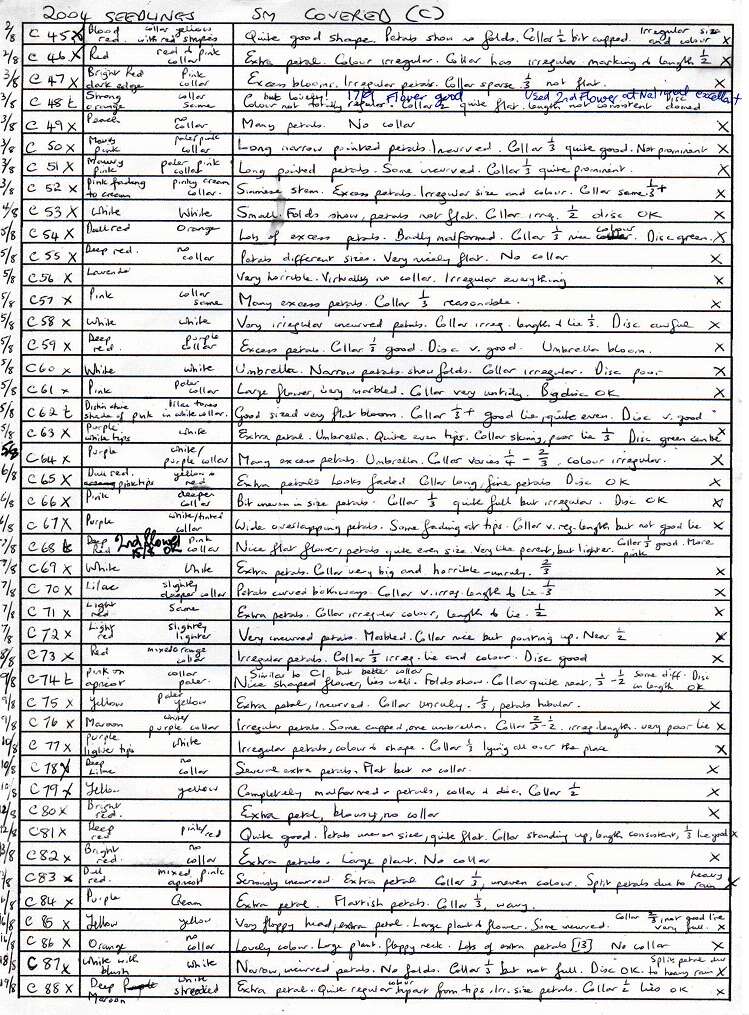 THE GROWING WORLD OF DAHLIAS
THE GROWING WORLD OF DAHLIAS
![]()
|
Seed pods were collected in October with stems of � metre. These were hung up in
bunches of named varieties in the greenhouse with frost protection. (The
pictures here were taken on November 6th, 2004 prior to frost damage but the
flowers by this time are obviously very poor). In 2003 we had our first frost in
Tiverton on October 8th.
|
|
|
| When the pods were dry and the seed ripened the
pods were opened and the seed collected. Only firm seed was selected and
the yield from each flower head was stored separately in small paper
boxes in a cool dry drawer. Approximately 40 to 50 seeds were taken from each head.
|
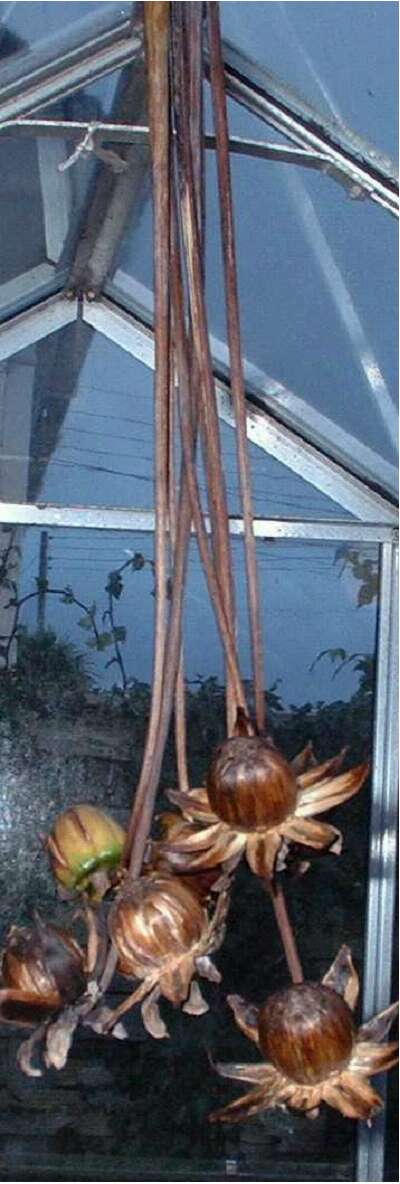 |
| In late March the seeds were sown 10 mms deep in trays of peat based compost,
144 per tray. |
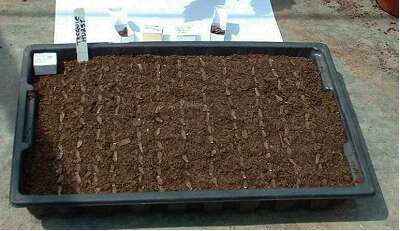 |
 |
Germination started after several days. |
As soon as the seedlings had reached the stage when they were big enough to be
potted on they were transferred into modules of 12 segments per seed tray
 |
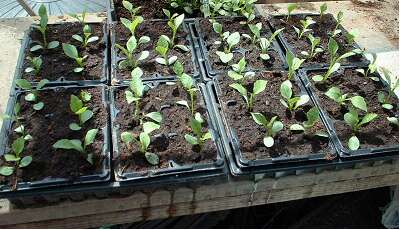 |
| At this stage the plants were ready to harden off. | Close up of sturdy plants with close leaf joints |
 |
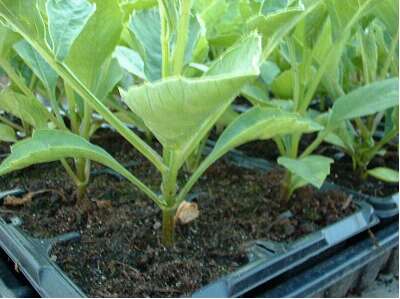 |
HARDENING OFF THE PLANTS
This was achieved by storing them in a tunnel, which had frost protection.
 |
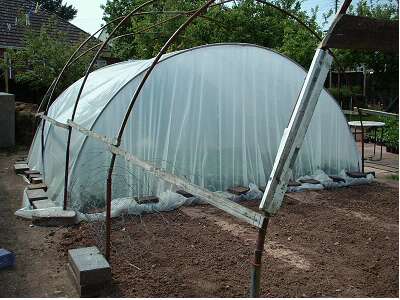 |
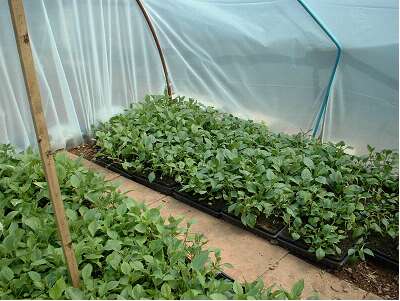 |
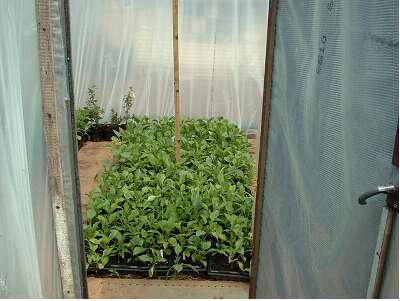 |
PLANTING OUT
| The seedlings were planted out between the 7th and 10th of June. The rows shown are Sue Mountjoy (C and U) and Demi Schneider. |
 |
The variety JACQUIE HURST in position and then planted out.
 |
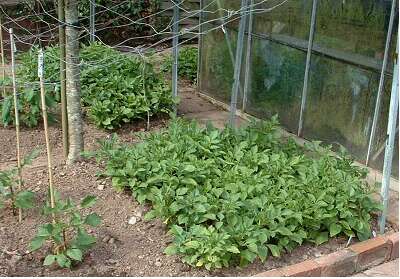 |
The same plants (in the foreground) in early July and when flowering (began on 24th July).
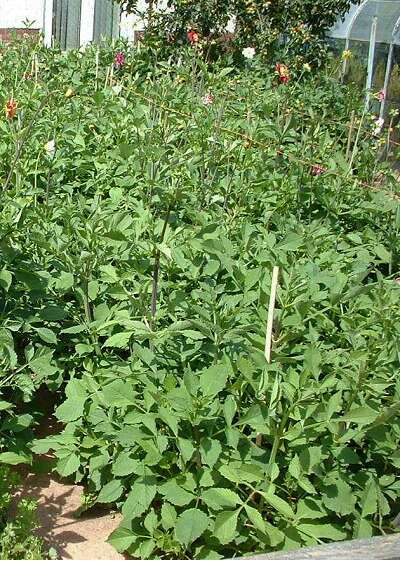 |
 |
 |
SUE MOUNTJOY (c) on the left, SUE MOUNTJOY (U) middle and DEMI SCHNEIDER (S) on the right in mid July. |
On the left the DEMI SCHNEIDER row (S) then (U) with (C) on the right and the
reverse in the photo on the right with the first flower from SUE MOUNTJOY (C) in
flower.
 |
 |
INFORMATION COLLECTED.
When the first flower from each plant reached its prime (in the case of
collerettes this is when two rings of pollen bearing stamens are showing) the
date was recorded and a photograph taken. The seedling number was assigned and
the colours and the number of main petals and the length and substance of the
collar petals or their absence, written down. Any other eccentricities or
significant information was added as considered of interest. This included the
size and regularity of the blooms, the strength of the stems and the size of the
plants.
If a seedling was considered to have exhibition potential it was marked either
as M or T. The former indicated that it was regarded as being definitely worth
growing in 2005 while the latter indicated that a decision should be made after
a second or third flower was judged. All seedlings regarded as being unworthy of
being grown again had an X recorded by the assigned number and were dug out and
discarded immediately, leaving more space for the good specimens to mature.
Quite a few seedlings were rejected that would have been retained in former
years as my standards have risen while some were very like established
varieties.
Recording began on the 13th July and continued until 29th September � a period
of 78 days. Some �first flowers� came out after the 29th. An arbitrary decision
was taken that such late flowering seedlings would probably not produce flowers
in the prime exhibition period.
Inevitably the photographs vary greatly in quality and clarity as the conditions
varied from bright sun to heavy rain and strong winds. Regretfully, a few
flowers were not photographed due to human error!
I wish to record my thanks to my wife, Maureen, who daily acted as scribe and
arbiter of �colour� and resolutely persuaded me to keep only the very best
specimens.
On the next page is a copy of a typical record sheet.
